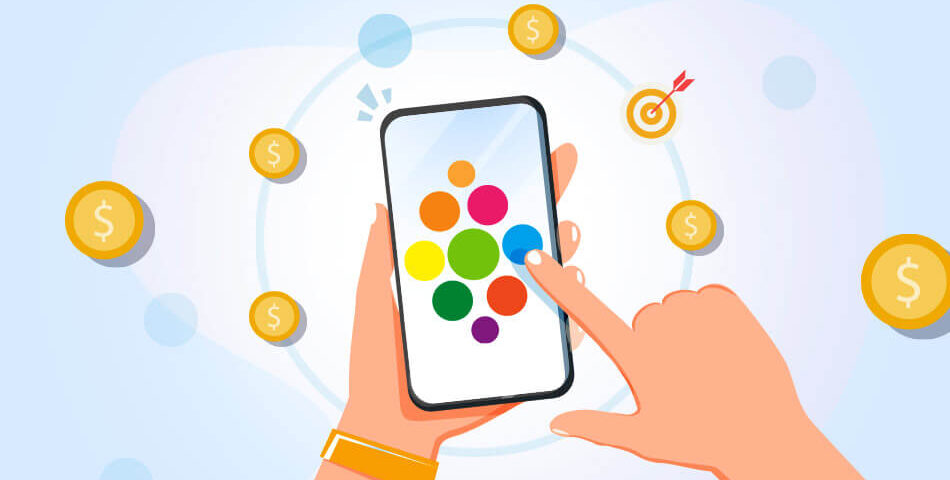App Monetization: Strategies for Success

iOS vs Android Market Share: A Comprehensive Analysis
May 26, 2024
Cross-Platform Apps: Revolutionizing Mobile Development
May 26, 2024App Monetization: Strategies for Success
Thank you for reading this post, don't forget to subscribe!Introduction
In today’s digital landscape, app developers strive to create engaging and profitable applications. App monetization is the process of generating revenue from an app, and it’s crucial for the sustainability of any mobile application. This article explores various app monetization strategies to help you maximize your app’s earning potential.
Understanding App Monetization
App monetization encompasses multiple methods to generate revenue from your mobile application. These methods can vary based on your app’s type, target audience, and market positioning. Choosing the right strategy is essential for success.
Popular App Monetization Strategies
In-App Advertising
In-app advertising is one of the most common monetization strategies. By integrating ads into your app, you can earn revenue each time a user views or clicks on an ad. This method includes several ad formats:
- Banner Ads: Small ads displayed at the top or bottom of the screen.
- Interstitial Ads: Full-screen ads that appear at natural transition points in the app.
- Native Ads: Ads that blend seamlessly with the app’s content.
- Rewarded Ads: Users watch ads in exchange for in-app rewards.
In-App Purchases
In-app purchases (IAPs) allow users to buy virtual goods or premium features within the app. This strategy works well for gaming apps and apps offering additional content or functionality. Types of in-app purchases include:
- Consumables: Items that can be used once and repurchased (e.g., virtual currency).
- Non-Consumables: Permanent features or items (e.g., ad removal).
- Subscriptions: Recurring payments for ongoing access to content or services.
Freemium Model
The freemium model offers a basic version of the app for free, with the option to upgrade to a premium version. This approach attracts a large user base while providing the opportunity to convert free users into paying customers. Premium features might include:
- Advanced functionality: Enhanced features not available in the free version.
- Exclusive content: Access to special content or services.
- Ad-free experience: Removal of ads for a better user experience.
Subscription Model
The subscription model involves charging users a recurring fee for access to the app’s content or services. This strategy is particularly effective for apps offering continuous value, such as streaming services, news apps, or fitness programs. Subscription models can include:
- Monthly subscriptions: Regular payments for ongoing access.
- Annual subscriptions: Yearly payments at a discounted rate.
Sponsorship and Partnerships
Sponsorship and partnerships involve collaborating with brands or companies to promote their products or services within your app. This strategy can include:
- Branded content: Custom content created for sponsors.
- Sponsored features: Exclusive features provided by partners.
- Co-branded marketing: Joint marketing efforts to drive engagement.
Data Monetization
Data monetization involves collecting and selling anonymized user data to third parties. This strategy requires a careful approach to ensure user privacy and comply with regulations. Potential buyers of data include:
- Market research firms: Companies seeking consumer insights.
- Advertisers: Businesses aiming to target specific audiences.
- Developers: Other app creators looking for usage patterns.
Choosing the Right Monetization Strategy
Selecting the best monetization strategy depends on various factors:
- App type: Different strategies suit different app categories.
- User base: Consider your audience’s preferences and willingness to pay.
- Market competition: Analyze competitors’ monetization methods.
- User experience: Ensure that monetization efforts do not disrupt the user experience.
Optimizing Your Monetization Strategy
To maximize revenue, continuously optimize your chosen strategy:
- A/B Testing: Experiment with different ad placements, pricing, and features.
- User Feedback: Gather insights from users to refine your approach.
- Analytics: Monitor key metrics to identify areas for improvement.
- Updates: Regularly update your app to keep users engaged and attract new ones.
Conclusion
App monetization is a dynamic and multifaceted process. By understanding and implementing the right strategies, you can generate substantial revenue from your app. Whether through in-app advertising, purchases, subscriptions, or partnerships, the key is to balance profitability with a positive user experience. Stay adaptable and responsive to market trends to ensure long-term success in the competitive app landscape.
For more information: www.ecbinternational.com


